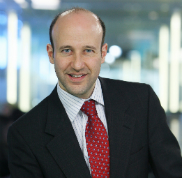Tahrir Square...in Tbilisi?
Time was, in a not-so-distant past, when blackouts and power cuts were the norm in a Georgian capital beset by post-Soviet strife. Today, Tbilisi's cutting-edge (too cutting edge, in the eyes of some nostalgic Georgians) urban planners are making a mockery of that benighted era, with a series of artfully lit public buildings and monuments which, once the sun goes down, transform the Caucasus's showcase metropolis into a sort of City of Light, light: There's the brightly lit glass, egg-shaped dome atop the spanking new Presidential Palace; the futuristic Bridge of Peace with its undulating waves of light coursing through thin panes of glass encased in a steel ribbing (It makes London's Millennium Bridge look almost retro); the ancient Narikala Fortress, bathed in magnificent amber light; and, perched on a hillside high above the city, the 274-meter TV Tower that sparkles at night like its eerily similar counterpart in a certain French capital. Even the police stations are glass, and brightly lit: Part of President Mikhail Saakashvili's campaign to break with the corruption that pervaded law enforcement in Soviet days, by making the place where the cops work transparent - literally.
And if you think Tbilisi is bright at night - try Batumi, the fast-developing Black Sea coastal resort (and terminus of the Baku oil pipeline) that doubles as Georgia's biggest port. At sunset, green spotlights are trained at the trees lining the town's boardwalk. It all looks a bit like the Jetson's landed in town, laden with blueprints, and then left in a hurry, leaving the locals to finish the building.
This light, bright image of a country tilting towards the future - one that includes Georgia as a full member of NATO, and maybe even of Europe - is at odds with the images of police using tear gas and rubber bullets to disperse anti-government portesters last weekend. The demonstrators have a single, over-arching demand: the resignation of Saakashhvili, the 43-year-old, fluent-english-speaking president who came to power in the bloodless 2003 'Rose Revolution'. Saakashvili, known affectionately to millions of Georgians simply as "Misha", sees himself as an enlightened reformist committed to securing Georgia's rightful place in the community of civilised (read Europe, NOT Russia) nations. His opponents counter that the image is a veneer, and that the President is just as corrupt and authoritarian as the Communist despots he built his political career inveighing against.
The truth, as often, probably lies somewhere in between. It's clear that, whichever side you may support, Saakashvili did himself few favors by fighting a disastrous five-day war with Russia in 2008. While it may have gained him short-term support from patriotic compatriots, the geopolitical fallout - especially where Russia is concerned - could hobble Georgia's grand European ambitions in the medium-term. As a colleague pointed out, it's up to the bigger power (i.e. Russia) to make the first move. That may be true - but with the Putin-Medvedev tandem calling the shots in Moscow, a speedy rapprochement doesn't seem to be in the offing.
Even some Georgians who appreciate what Saakashvili has done to reduce social inequality and poverty in his country, do not exude a natural warmth towards him. Last Saturday, the night before I left Georgia, I had dinner at the home of a Georgian family in the drab industrial town of Rustavi, 25 kilometres southeast of Tbilisi. Stalin built Rustavi as a steel-making centre in the late 1940s. Today, it is a case study in the challenges confronting Georgia as it tries to overcome a Soviet legacy of catastrophically bad economic planning, and contempt for the individual. When I told a colleague I was visiting Rustavi, his first reaction was: "It's a shithole." Another friend, with many years experience working in the former Soviet Union, described it, circa his last visit in 2004, as "apocalyptic". Once again, the truth may lie somewhere in between. But even Rustavi's urban planners have taken a cue from their peers in the capital: the town's monolithic high-rises; throwbacks to the Soviet days, are today framed in ribbons of colour that run up the sides of each building and across the roof. Not exactly a City of Light, but perhaps a sign that even in a place as seemingly down-at-the-heels as Rustavi, people harbour hope for the future.



0 Comments
Post new comment